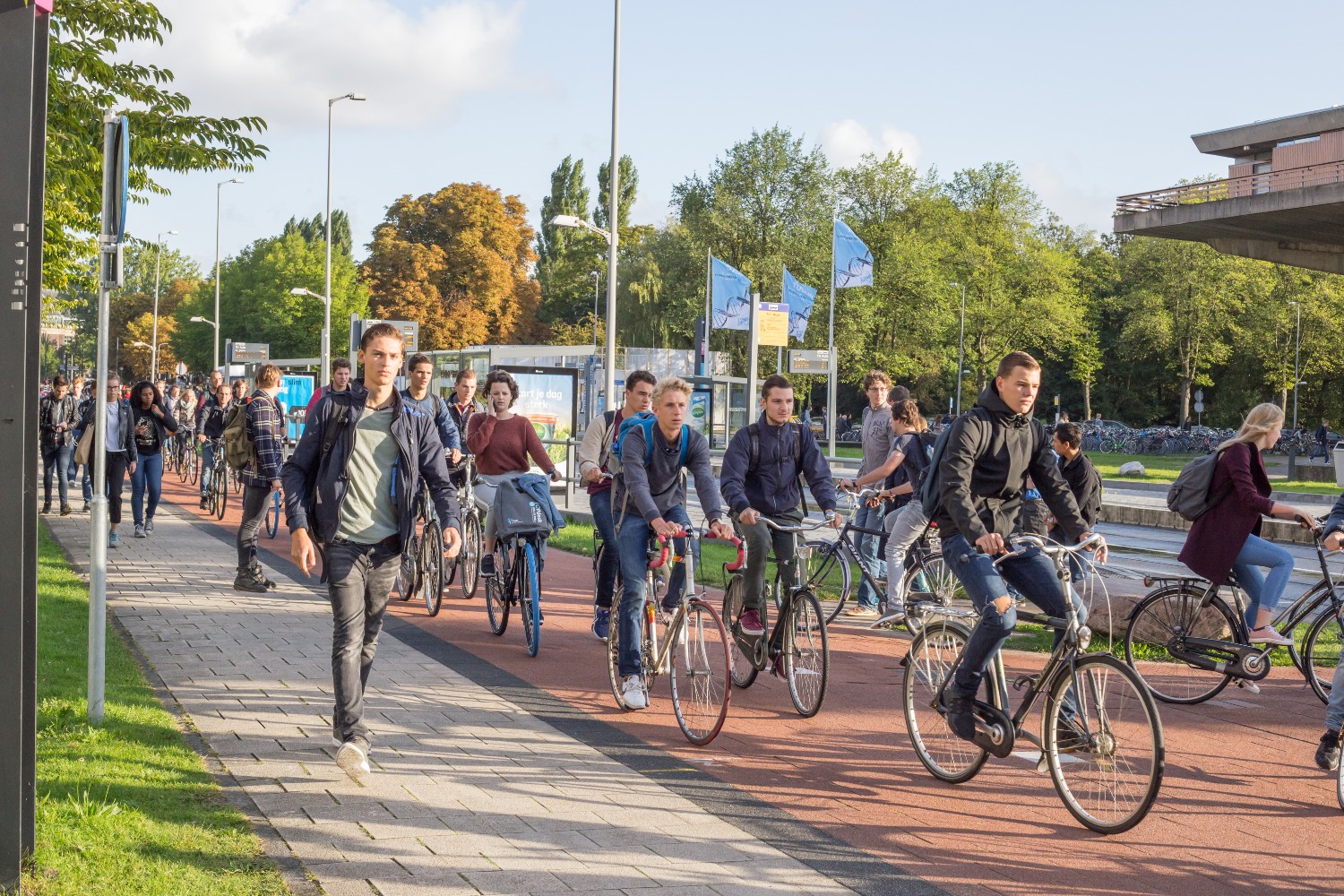40,000 students fewer than expected are going to enter higher education, the Ministry of Education believes. The growth in academic education is slowing down.
A crowded campus. (Photo: Thomas Zwart)
A year ago, the Ministry forecast that in 2029 there would be 18,000 fewer students at universities of applied sciences than today. The statisticians now believe, however, that there will actually be 40,000 fewer.
It had been expected that the research universities would actually attract 65,000 more students. According to the latest ‘baseline forecast’ that figure will be only 23,000.
Too optimistic
For many years the Ministry underestimated the growth in student numbers, especially at the research universities. To the dismay of the higher education institutions, that resulted in shortfalls in the State Budget and cuts in higher education. The feeling now is that the Ministry was too optimistic last year.
- Delta also revealed earlier this year that the number of future students at TU Delft was deliberately underestimated in recent years.
The upcoming introduction of the basic student grant might have something to do with the lower influx in the current academic year. Many youngsters have taken a gap year after their final exam instead of carrying on with their studies straight away.
But that makes no difference in the long term. The Ministry expects them to return to their higher education institutions. The future decline has other causes.
Tight labour market
A more significant issue is, for example, that many higher education students leave without graduating. That means fewer senior students. Academic setbacks that arose during the coronavirus pandemic might play a role in this, but the bigger dropout could also result from the appeal of the tight labour market.
This means that senior secondary vocational students find a job more quickly and are less likely to pursue higher education. The same applies at research universities: in 2022 fewer Bachelor’s students went straight on to a Master’s programme. The Ministry believes the labour market will continue to be tight for a while.
Uncertain
The forecasts are uncertain, however. Maybe the lapsed students will resume their studies later. That has not been taken into account in the forecasts.
And how many foreign students will come here? That calculation could be better too, in the opinion of a special committee that oversees the forecasts. In the current forecasts the Ministry is simply extending the line of the graph (linear extrapolation), “which suggests the possibility of never-ending growth”, according to the committee. “That isn’t realistic.”
TU Delft
Stalling transfer students may have an effect on TU Delft’s growth ambition announced at the end of 2022, as it partly leans on the hope of attracting a new type of student. Rector magnificus Tim van der Hagen earlier suggested in an interview in Delta that much of the growth should come from Dutch youngsters, to maintain a balance with international students. But, he noted, “interest in engineering is unfortunately slowing down”. “We need to get into the schools, into the neighbourhoods, appeal to first-generation students.”
- TU Delft’s growth plans have not yet been finalised. Deliberations are taking place in as many as eight committees. To also stimulate public debate, Studium Generale and Delta are organising a theatre dialogue on 9 May. You can register here.
HOP, Hein Cuppen/Delta, Saskia Bonger
Translation: Taalcentrum-VU
Do you have a question or comment about this article?
redactie@hogeronderwijspersbureau.nl


Comments are closed.